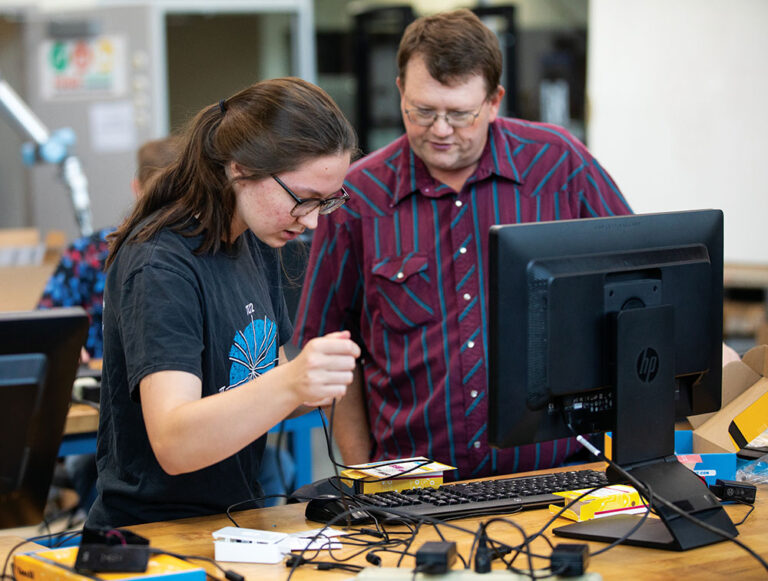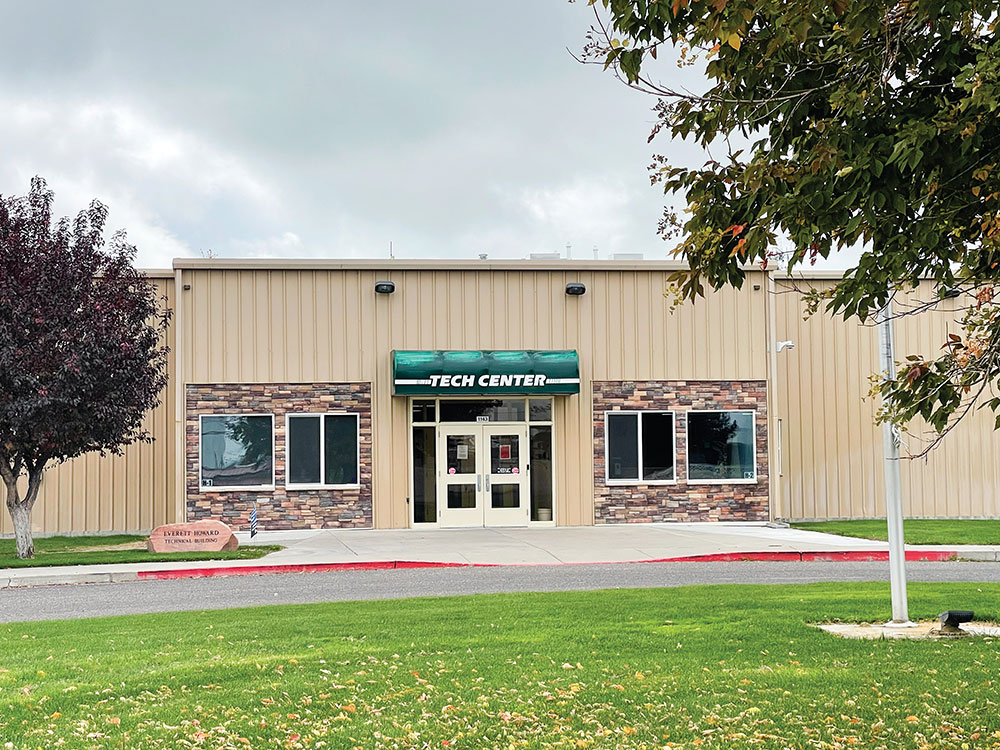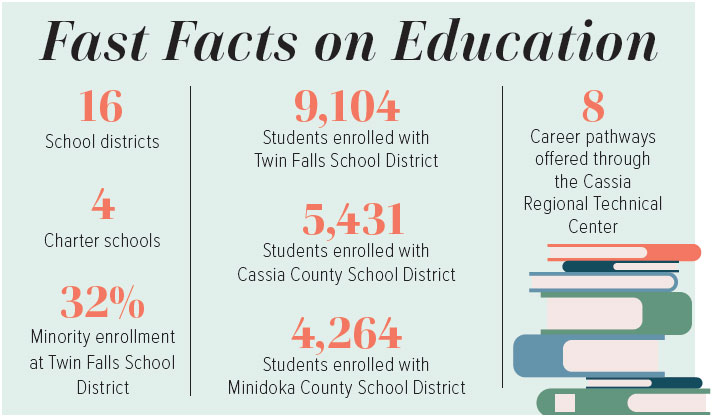Students Get a Smart Start in Southern Idaho
Workforce development programs in Twin Falls and the region connect tomorrow’s talent to career opportunities in the Magic Valley.

Public schools in Southern Idaho play a critical role in workforce development efforts, offering students several innovative learning opportunities that give them a head start to both college and careers.
Powerful Partnerships
Cassia County School District is home to the Cassia Regional Technical Center, a school that offers career pathways in eight different fields, including automated manufacturing technology, graphic communications and certified nursing assistant. Programs give students lab-intensive, hands-on and work-based learning experiences that prepare them for career success.
“Our CNA (certified nursing assistant) and EMT (emergency medical technician) second-year students, for example, are doing clinicals to earn their certifications. Many of our students also get internships with our business partners that give them that hands-on training, and they’re paid for it,” says Kit Kanekoa, director of the Cassia Regional Technical Center. “We have a machine operator program, and we partner with High Desert Milk and McCain Foods in Burley to place kids in paid internships.”
Kanekoa says these business partnerships are essential to the school’s success and ensure students are learning the skills local industry needs.

“Our instructors come from industry, so they’re more aware of changes, updates and upgrades in the field. That gives us a huge advantage.”
Kit Kanekoa, director of the Cassia Regional Technical Center
A Technical Advisory Committee made up of community and business partners meets with district officials at least twice a year to detail what is happening in different industries and how the district can better help fill their workforce needs. To say the collaboration is paying off is an understatement.
“Our instructors come from industry, so they’re more aware of changes, updates and upgrades in the field,” Kanekoa says. “That gives us a huge advantage.”
The district also partners with the College of Southern Idaho to offer dual enrollment and industry certifications. Students can simultaneously earn high school credit and college credit at a fraction of the cost.
“Students choose to come here for training, and either we can place them in jobs right out of high school or they can earn college credits toward an associate degree from CSI or the College of Western Idaho, which is doing some amazing things,” Kanekoa says.
The Buhl School District has an Advanced Opportunities program, which allows students to individualize their high school learning plan through dual credit, technical competency credit, Advanced Placement and International Baccalaureate programs.

Workforce Ready
The Twin Falls School District offers several career pathways, such as agriculture science, automated manufacturing, welding, health care and finance, that prepare students for in-demand jobs in the region.
“We’ve been working to prioritize careers in our community because we recognize that there are a lot of jobs here in the Magic Valley that are really good-paying jobs and provide sustainable careers,” says Brady Dickinson, superintendent of the Twin Falls School District. “There’s a disconnect between kids knowing what jobs are available and knowing how to access those jobs. Too many kids think they have to leave the area to find those good, high-paying jobs and careers, but that’s not the case.”
Like Cassia County, the Twin Falls School District also works closely with local businesses to determine the skills needed for students to be successful. Dickinson says the partnerships the district has with the business community are a key to college and career readiness.
“We have committees made up of local industry leaders, and they help us determine what the needs are and then tailor our programs to meet those needs,” he says.
He cites the region’s growing dairy industry as a prime example.
“It’s important for us to be nimble and to be willing to change and keep up as programs evolve. Look at the dairy industry today and all the robotics that go into managing milk production. It’s different than it was 30 years ago, and we can’t teach skills that are 30 years old. The next step that we’re looking at is expanding our ag program to target the dairy industry and the high-tech aspects,” Dickinson says.
The district also has a strong partnership with the College of Southern Idaho, so students can earn college credits while they’re in high school.
“Our programs are articulated so that as students finish high school, they can immediately finish their advanced training at CSI because most of these jobs will require additional training beyond high school,” Dickinson says. “We make that as seamless as possible for the kids. We had 41 students last year graduate high school with associate degrees.”
By adopting a forward-thinking approach, creating close ties with local businesses and building strategic partnerships, schools are not only introducing students to thriving, high-paying careers in their community but also shaping the future of education and workforce readiness.
Get to Know Southern Idaho
Want to learn more about living and working in Twin Falls and Southern Idaho? Check out the latest edition of Livability Southern Idaho.



